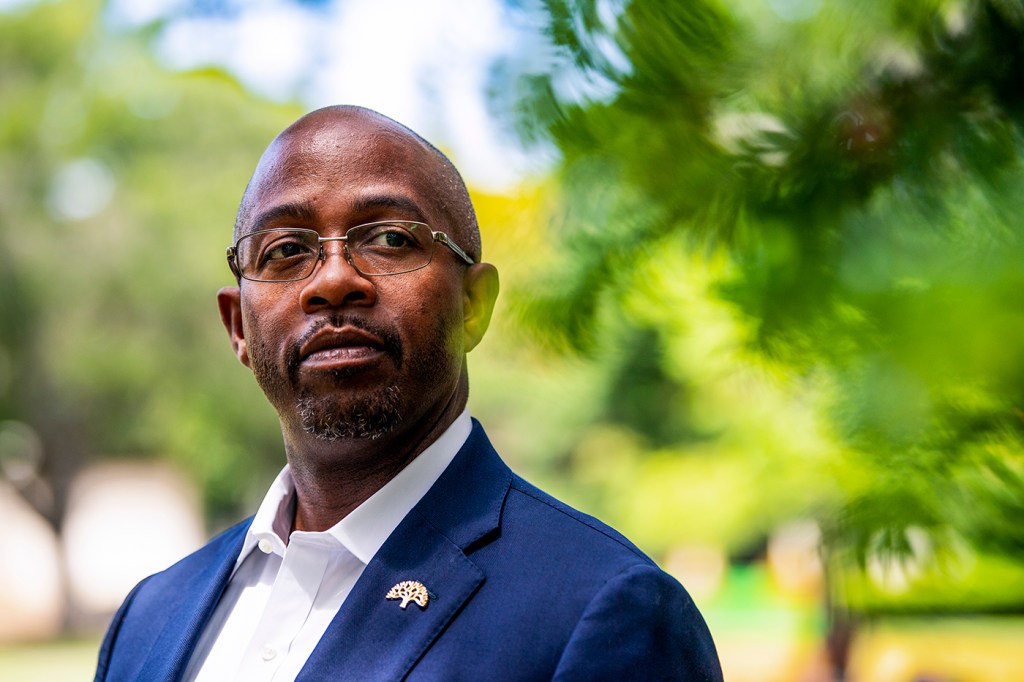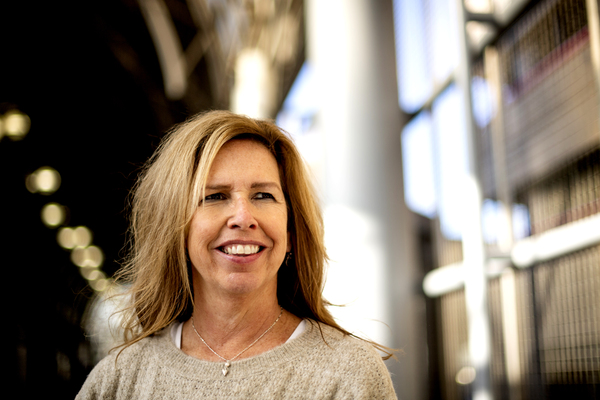Bay Area leaders optimistic about future of Mills College at Northeastern University

OAKLAND, Calif. —Loren Taylor is a third-generation Oaklander, a member of the City Council and candidate for mayor. An engineer with a graduate degree and an MBA, he has helped guide several Bay Area businesses through difficult transitions as a consultant. He prides himself on being an innovative, progressive and pragmatic problem-solver.
Taylor also believes in the unlimited potential of Mills College at Northeastern University.
“I’ve gone through a few corporate mergers and integrations,” Taylor says. “And I know that whenever you blend cultures, institutions and histories there’s always some trepidation about what’s to come—how do we preserve the past while moving forward?”
Taylor says the answer is giving the Northeastern-Mills merger, which was finalized in September and will become official July 1, a chance to succeed and time to thrive.
Mills, a historically all-women’s college founded in 1852, had an enrollment of about 500 when the Board of Trustees, citing financial hardships, voted last year to close its doors. Mills then found a partner in Northeastern, a gender-inclusive global university founded in 1898 with campuses in three countries and 12 cities.

Mary Ludden, Northeastern’s senior vice president for global network and strategic initiatives who oversees campuses outside Boston, says the university is unequivocally dedicated to preserving and advancing Mills’ legacy of promoting social justice, women’s leadership and gender equality.
“We want to be part of that community and build up those relationships that have existed and thrived for so many years,” she says.
Taylor says he was involved in talks with the college and university as the merger evolved from idea to reality.
“When I’ve had conversations with leadership at Mills and Northeastern,” Taylor says, “I’ve always come away reassured. I hear, feel and sense that there’s a true commitment to ensuring the legacy of what Mills had. I look forward to seeing that happen.”
Ludden expects enrollment at Mills in the fall to be its largest in several years. Students arriving in late August will include 520 incoming Northeastern students, as well as 300 returning undergraduate and graduate students.
N.U.in students elect to spend their first semesters of college studying in another country—Mills was also made a domestic option this year—while NU Bound students begin their college careers on Northeastern’s residential campuses in Oakland or London.
Libby Schaaf, Oakland’s outgoing two-term mayor—the city has term limits—says it’s critical for Northeastern to continue Mills’ mission of advancing student success.
“Northeastern’s [expected] merger with Mills College creates a new opportunity for the campus to uplift more young students and their voices,” she says. “Mills College holds a special place in Oaklanders’ hearts, as it’s always served as a beacon for speaking truth to power and elevating our highest values of social justice.”
“Now, as we continue to watch this transition and relationship with Northeastern develop, we’ll be rooting for all students and future alumnae to revitalize these proud traditions, create new ones, and develop the next generation of young, proud, fierce leaders from the East Bay.”
Melissa Stevenson Diaz is one of those leaders. The city manager of Redwood City, a San Mateo County community about 45 minutes south of Oakland, Diaz graduated from Mills in 1991 and has served on its Board of Trustees, Board of Governors and Alumnae Association.
She was also the incoming student body president in 1990 when Mills was considering whether to admit men. Ultimately, the college chose not to become co-ed after students went on strike, but that was her first exposure to the dynamics around higher education finances, Diaz says.
Over the past three decades, there have been several other attempts to strengthen Mills’ bottom line, according to Diaz, including exploring development opportunities on campus. Those also failed, she says.
“It was becoming really clear that the headwinds were strong and just worsening for small liberal arts colleges,” Diaz says.
Despite the college’s known financial struggles, Taylor respects and welcomes the opinions of the small but vocal contingent of Mills alumnae who oppose the merger.
“I think a lot of people who were resistant to the merger were afraid of what was being taken away, what was being lost,” Taylor says. “But it’s all about growth. It’s all about expanding the potential and the opportunity.”
Mills is an anchor in Taylor’s City Council district. In high school, he participated in Upward Bound, spending overnights on campus as part of the program that helps low-income and first-generation college-bound students. In college, he returned to Mills to attend events as part of INROADS, which promotes diversity in corporate America.
Taylor says he has listened to the concerns of students and alumnae, offering his advice during the transition.
“We can, could and should preserve that which we love about Mills,” Taylor says, “while adding the potential of those many other assets that Northeastern has perfected and done so well in a very complementary way.”
Ludden says the merger is not about creating a college in the likeness of Northeastern’s Boston campus. She says new and unique programming at Mills at Northeastern will leverage the power of the West Coast. The Oakland campus will be home to undergraduate, graduate and professional programs.
“It’s a fully enabled campus with research, learning programs and partnership programs,” Ludden says.
Facebook, Google, Oracle, Amazon, Accenture, Apple and Kaiser Permanente are among the Bay Area’s largest employers. The list is obviously much longer.
“It’s the Mills legacy, coupled with the place, coupled with the large industry partners that’s going to create a model of education that is much more focused on industry needs,” Ludden says. “It’s the power of place. It’s California itself.”
In 2015, Diaz’ daughter was graduating from high school and touring colleges. That process opened Diaz’ eyes to an education that goes beyond a liberal arts-only approach.
“I was able to see first-hand what other institutions were able to offer was a much richer suite of services for students,” she says. “I was concerned that Mills was not able to really help students translate their education into work opportunities as effectively as needed.”
Diaz was thrilled when she heard Mills would be merging with Northeastern.
“Northeastern’s background, its real strengths are in the areas that I felt Mills were simply not going to be able to manufacture on its own,” Diaz says. “Things like supporting students in having work experiences.”
Ultimately, Diaz believes it’s that balance of Mills’ liberal arts education and Northeastern’s leadership in global experiential learning that will set the Oakland campus apart. Diaz’ community of Redwood City is home to Stanford University’s new administrative offices. It’s also a short drive from San Jose State, Santa Clara and other colleges.
“Mills at Northeastern is distinct from all of those institutions,” Diaz says. “That’s because Mills has the much deeper and longer tradition around liberal arts. And then Northeastern brings the complimentary focus of research and the co-op program. It’s truly unique.”
But for Taylor it all circles back to the impact Mills has made and will continue to make on the Oakland community. One example is the college’s Center for Transformative Action, which brings together students, businesses and community leaders to create economic opportunities and promote environmental justice and social equality.
“That’s an example of going outside the walls or the gates of the campus to make a broader impact,” Taylor says.
Where would civic leaders like to see Mills College at Northeastern University after it completes its transition?
First, Taylor says, he would like to see those who were heavily skeptical become fully engaged and positive about where things are moving.
“This is land, buildings and a campus,” he says. “But what is being built is the generational connectivity and impact locally and globally. So being able to see that expand beyond how the campus looks like is how I would measure success.”
For media inquiries, please contact media@northeastern.edu






